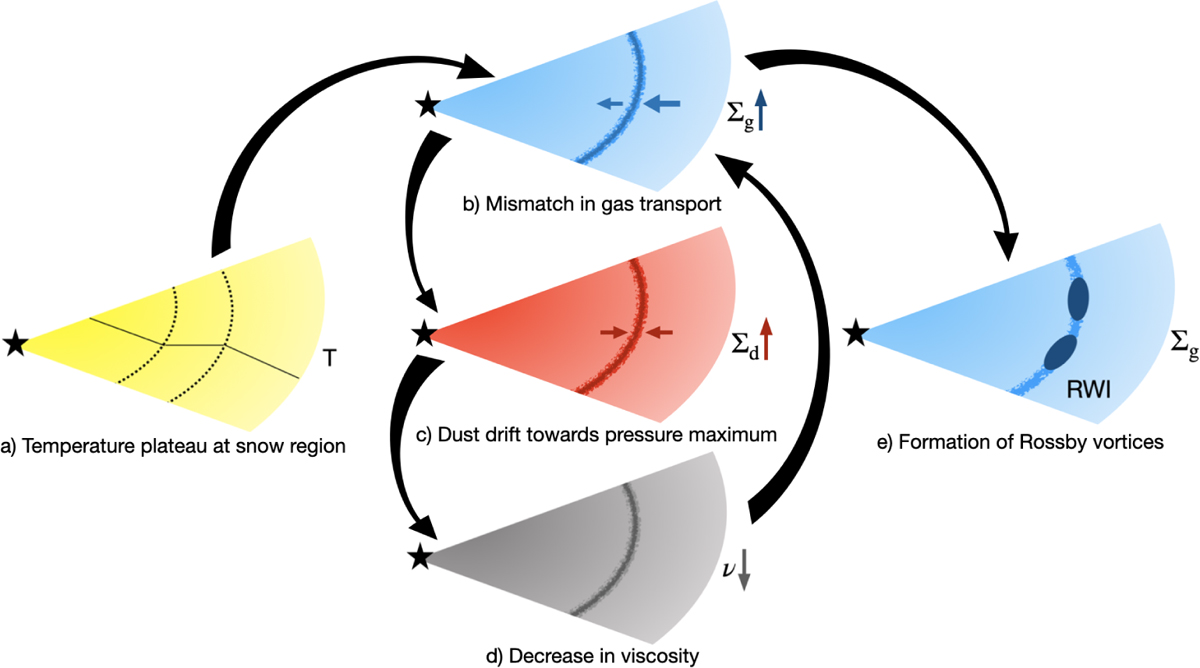Fig. 3

Download original image
Cartoon explaining the mechanism behind the formation of self-sustaining vortices at the temperature plateau at the water snow region. The temperature substructure gives rise to marginal mismatch in the gas accretion rates, seeding the initial perturbation in gas surface density. The dust is attracted toward the resulting pressure maximum, which, in turn, lowers the local dust-dependent viscosity. This, in turn, creates a bottleneck to angular momentum transport, amplifying the perturbation in the gas and thus leading to a positive feedback loop. In a 1D disk, such feedback leads to VRI, forming multiple concentric rings. In 2D simulations, the gradient of gas surface density eventually becomes sharp enough to trigger Rossby wave instability, and vortices are formed. The positive feedback responsible for VRI contributes toward the stability of formed vortices.
Current usage metrics show cumulative count of Article Views (full-text article views including HTML views, PDF and ePub downloads, according to the available data) and Abstracts Views on Vision4Press platform.
Data correspond to usage on the plateform after 2015. The current usage metrics is available 48-96 hours after online publication and is updated daily on week days.
Initial download of the metrics may take a while.


